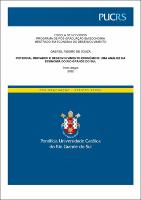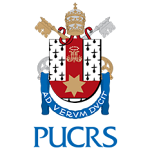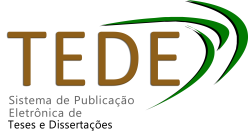| Share record |


|
Please use this identifier to cite or link to this item:
https://tede2.pucrs.br/tede2/handle/tede/10370Full metadata record
| DC Field | Value | Language |
|---|---|---|
| dc.creator | Souza, Gabriel Ribeiro de | - |
| dc.creator.Lattes | http://lattes.cnpq.br/6625617613282980 | por |
| dc.contributor.advisor1 | Alvim, Augusto Mussi | - |
| dc.contributor.advisor1Lattes | http://lattes.cnpq.br/5389042578042654 | por |
| dc.date.accessioned | 2022-08-16T16:54:58Z | - |
| dc.date.issued | 2022-07-20 | - |
| dc.identifier.uri | https://tede2.pucrs.br/tede2/handle/tede/10370 | - |
| dc.description.resumo | Este estudo tem como objetivo identificar algumas das principais variáveis que explicam o desenvolvimento econômico dos municípios do Rio Grande do Sul (RS), considerando a localização das atividades dentro do estado e o papel destas atividades em gerar inovações. Sendo assim, foi utilizada Análise Exploratória de Dados Espaciais (AEDE), com o objetivo de identificar clusters de inovação e desenvolvimento e, posteriormente, foram realizadas regressões com o objetivo de analisar o papel que o potencial em gerar inovações, a presença de parques tecnológicos, a urbanização e a diversificação produtiva possuem no desenvolvimento econômico dos municípios e suas respectivas regiões. A AEDE indicou que o potencial inovador e o desenvolvimento econômico dentro do estado possuem relação positiva com as regiões em que estão localizadas, permitindo a identificação de clusters nas principais zonas urbanas do estado. A modelagem econométrica demonstrou que fatores como potencial em gerar inovações, taxa de urbanização dos municípios e a presença de parques tecnológicos trouxeram resultados positivos para o desenvolvimento econômico no RS. Por outro lado, a diversificação de atividades não trouxe resultados conclusivos, indicando que existe certa limitação em gerar benefícios que afetem diferentes setores da economia. | por |
| dc.description.abstract | This study aims to identify some of the main variables that explain the economic development of the municipalities of Rio Grande do Sul (RS), considering the location of activities within the state and the role of these activities in generating innovations. Therefore, Exploratory Spatial Data Analysis (ESDA) was used with the objective of identifying clusters of innovation and development and, later, regressions were carried out in order to analyze the role that the potential in generating innovations, the presence of technology parks, the urbanization and the productive diversification have on the economic development of municipalities and their respective regions. The ESDA indicated that the innovative potential and economic development within the state have a positive relation with the regions in which they are located, allowing the identification of clusters in the main urban areas of the state. The econometric modeling showed that factors such as potential to generate innovations, urbanization of municipalities and the presence of technology parks brought positive results for economic development in RS. On the other hand, the diversification of activities did not bring conclusive results, indicating that there is some limitation in generating benefits that affect different sectors of the economy. | eng |
| dc.description.provenance | Submitted by PPG Economia do desenvolvimento ([email protected]) on 2022-08-15T20:05:37Z No. of bitstreams: 1 GABRIEL_RIBEIRO_DE_SOUZA_DIS_.pdf: 1534964 bytes, checksum: 61b29971131d0c1f1556a31d26505728 (MD5) | eng |
| dc.description.provenance | Approved for entry into archive by Caroline Xavier ([email protected]) on 2022-08-16T16:50:23Z (GMT) No. of bitstreams: 1 GABRIEL_RIBEIRO_DE_SOUZA_DIS_.pdf: 1534964 bytes, checksum: 61b29971131d0c1f1556a31d26505728 (MD5) | eng |
| dc.description.provenance | Made available in DSpace on 2022-08-16T16:54:58Z (GMT). No. of bitstreams: 1 GABRIEL_RIBEIRO_DE_SOUZA_DIS_.pdf: 1534964 bytes, checksum: 61b29971131d0c1f1556a31d26505728 (MD5) Previous issue date: 2022-07-20 | eng |
| dc.description.sponsorship | Coordenação de Aperfeiçoamento de Pessoal de Nível Superior - CAPES | por |
| dc.format | application/pdf | * |
| dc.thumbnail.url | https://tede2.pucrs.br/tede2/retrieve/184881/GABRIEL_RIBEIRO_DE_SOUZA_DIS_.pdf.jpg | * |
| dc.language | por | por |
| dc.publisher | Pontifícia Universidade Católica do Rio Grande do Sul | por |
| dc.publisher.department | Escola de Negócios | por |
| dc.publisher.country | Brasil | por |
| dc.publisher.initials | PUCRS | por |
| dc.publisher.program | Programa de Pós-Graduação em Economia do Desenvolvimento | por |
| dc.rights | Acesso Aberto | por |
| dc.subject | Desenvolvimento Regional | por |
| dc.subject | Inovação | por |
| dc.subject | Econometria Espacial | por |
| dc.subject | Regional Development | por |
| dc.subject | Inovation | por |
| dc.subject | Spatial Econometrics | por |
| dc.subject.cnpq | CIENCIAS SOCIAIS APLICADAS::ECONOMIA | por |
| dc.title | Potencial inovador e desenvolvimento econômico : uma análise da economia do Rio Grande do Sul | por |
| dc.type | Dissertação | por |
| dc.restricao.situacao | Trabalho não apresenta restrição para publicação | por |
| Appears in Collections: | Programa de Pós-Graduação em Economia do Desenvolvimento | |
Files in This Item:
| File | Description | Size | Format | |
|---|---|---|---|---|
| GABRIEL_RIBEIRO_DE_SOUZA_DIS_.pdf | GABRIEL_RIBEIRO_DE_SOUZA_DIS | 1.5 MB | Adobe PDF |  Download/Open Preview |
Items in DSpace are protected by copyright, with all rights reserved, unless otherwise indicated.




